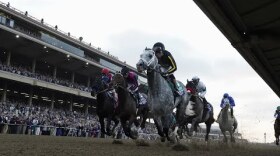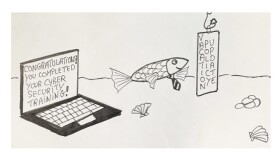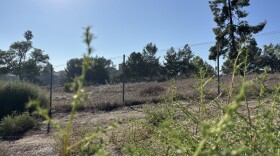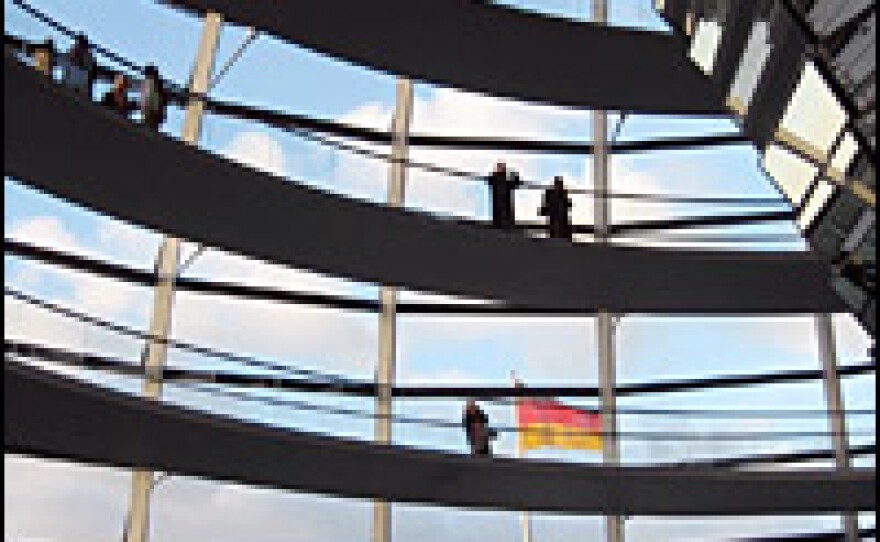
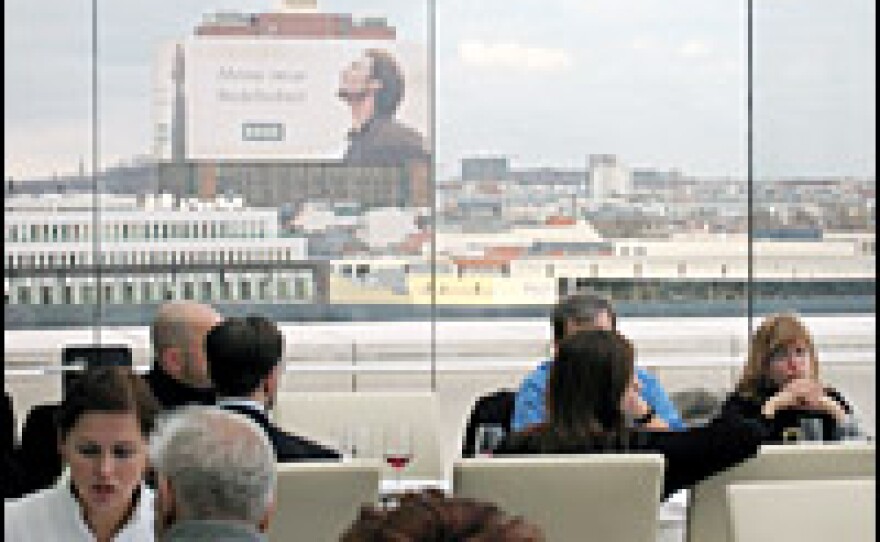
A lot of history is wrapped up in Berlin's Reichstag building. Built in the latter half of the 19th century as a symbol of German unity, it was set afire by the Nazis to force its closure in 1933, bombed and shot up by the allies in World War II, then abandoned and left in disrepair for decades in a no-man's land between Cold War-divided East and West Berlin.
Today, it stands restored, once again the seat of united Germany's Bundestag, or parliament.
For the history buff, the building's restorers left a section where there are still bullet holes from the war and graffiti painted on the walls by Russian troops who liberated it in 1945.
The building's crowning glory is the glass and steel dome built over its roof. Architect Sir Norman Foster says that with the design, he was determined to create "a dialogue between the old and the new" — a symbol of the new Germany's desire for its government to be transparent and open to all.
The dome dominates the skyline and, like the Eiffel tower in Paris, it is Berlin's best viewing platform, a place to gaze over the city's rooftops, old and new. A double helix ramp allows the multitude of visitors who crowd the roof daily to wind their way up and then down inside the dome while breathing in the 360-degree views
But there is another reason for going up to the Reichstag roof: the Dachgarten Restaurant. Its existence is one of the little advertised joys of the Reichstag. Perched on the ramparts where the historic photos of Russian troops planting their conquering flags were taken, it serves politicians and tourist alike.
The German food and wine are excellent, but it is the views looking east over the heart of old Berlin that take the breath away. Through the soaring panes of glass that encase the restaurant, one looks out over the modernist architecture of the Bundestag staff offices along the banks of the Spree river; the bronze, horse-drawn chariot atop the nearby Brandenberg Gate; the domes of the city's multiple ancient cathedrals; and the shining gold of the restored Neue Synagogue. It is hard to imagine a more stunning site for a restaurant.
The cafe itself, like the dome outside, was designed by Britain's Foster. The room is clean, spare, stylishly post-modern, with an open kitchen where toqued chefs prepare breakfast, lunch and dinner before the giant windows that look out over what once, before the dismantlement of the Berlin Wall, was communist East Berlin.
Aficionados say the restaurant is best for breakfast, when there are smaller crowds. Lunch tends to Continental cuisine; at dinner, the meals are more innovative and inventive.
The lunch menu is limited to three or four choices of three-course meals that must be ordered ahead of time, when booking a reservation, which is required.
I had a salad with a fish flan to start, a main course of venison and dumplings, followed by compote of berries and cream. It was washed down by an excellent Spatburgunder pinot noir from Baden. Others in my group had fish and a Rhine Riesling. This being Germany, there are also offerings of duck and pork.
This is not high cuisine — nor is it inexpensive (prices range from $75 to $123 for the fixed-price menu) — but it is solid, eatable fare, well presented.
Another good reason to eat at the Dachgarten Restaurant when visiting Berlin is that a reservation lets you jump the queue of people lined up, often for hours, for a chance to visit the Reichstag dome.
With reservation in hand, you can enter a side door and, after a thorough security check, be whisked up to the roof by elevator. You get to wander around the spectacular dome, then sit down for a delightful meal with the views of Berlin still dancing in your eyes.
Dachgarten Restaurant — Kafer Berlin im Deutscher Bundestag, Reichstag, Platz der Republik, Berlin, Germany. Telephone: 49-30-226-2990. Open daily 9 a.m. to 4:30 p.m. and 6:30 p.m. to midnight.
Copyright 2022 NPR. To see more, visit https://www.npr.org. 9(MDAzMjM2NDYzMDEyMzc1Njk5NjAxNzY3OQ001))





